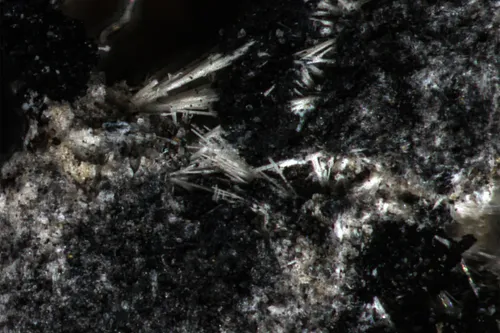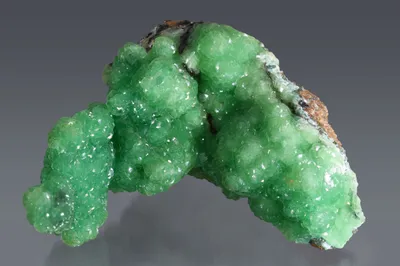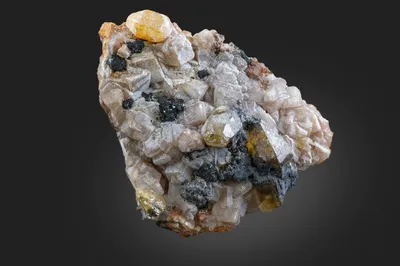
Image Credit: Matt Swain
Mineral Species
Plumboselite
Type Locality
Yes
Composition
Pb3O2(SeO3)
Crystal System
Orthorhombic
Status at Tsumeb
Confirmed (type locality)
Abundance
Extremely rare
Distribution
Second oxidation zone
Paragenesis
Supergene
Entry Number
Species; TSNB283
Type Mineralogy
Three specimens of clausthalite were collected by TCL mineralogist John Innes during the late 1970s or early 1980s, almost certainly from the second oxidation zone and "… probably from the vicinity of 30 Level" (Kampf et al. 2012). The clausthalite was covered by minute crystals of a colourless but unidentified mineral which Georg Gebhard believed to be a lead selenate and to which he assigned a working designation of GS19 (Gebhard 1999). Later study showed it to be a lead selenite, which was approved as a new mineral, IMA 2010-028, and named for its composition (Kampf et al. 2012). Type material is conserved at the Los Angeles County Museum of Natural History, California (catalogue number 63264). Co-type material is in the Feinglos Collection at Harvard University (MGMH 2022.4.6033T).
General Notes
Plumboselite occurs as sub-parallel to divergent clusters of thin, flattened, colourless, brittle fibres to 0.3 mm in length but not exceeding 5 μm in width and 2 μm thickness. The fibres are transparent, with a dull to adamantine lustre. On the type material plumboselite rests directly on the clausthalite from which it "… clearly formed as an oxidation product thereof" (Kampf et al. 2011).
Flynn et al. (2016) noted the presence of plumboselite of similar description in association with munakataite and clausthalite; the specimen they studied is also now in the Feinglos Collection at Harvard University (MGMH 2022.4.10403T).
Associated Minerals
clausthalite; mattheddleite (?); mimetite; munakataite; orlandiite (?); quartz; sidpietersite; smithsonite; vaterite



